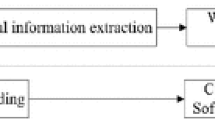Abstract
We have proposed the maintenance effort assessment model based on two Wiener processes for the operation of open source software (OSS) used in the edge computing in the past. In particular, we consider that this proposed model can assess the reliability by using three dimensional graph. Then, we have proposed two-dimensional modeling based on the effort management in the past. In this paper, we propose new expanded maintenance model considering OSS edge computing by expanding the existing two Wiener processes model in order to consider the network environment under the edge OSS operation. Especially, it is important to control the amount of maintenance effort expense in the long-term phase. Then, we propose the optimization method based on the past two-dimensional Wiener processes model. Thereby, it will be helpful to assess the operation effort expenditures with network environment of edge OSS service. Moreover, actual effort data sets are analyzed to show numerical examples of the proposed optimization method considering the network environment under the edge OSS operation.











Similar content being viewed by others
References
Ahmad, A. A., et al. (2019). Scalability analysis comparisons of cloud-based software services. Journal of Cloud Computing: Advances Systems and Applications. https://doi.org/10.1186/s13677019-0134-y
Arnold, L. (1974). Stochastic differential equations-theory and applications. John Wiley & Sons.
Caprolu, M., & Di Pietro, R., Lombardi, F., & Raponi, S. (2019). Edge computing perspectives: architectures, technologies, and open security issues. In Proceedings of the 2019 IEEE international conference on edge computing (EDGE) (pp. 116–123,) Milan, Italy. https://doi.org/10.1109/EDGE.2019.00035.
Dolui, K., & Datta, S. K. (2017). Comparison of edge computing implementations: Fog computing, cloudlet and mobile edge computing. In Proceedings of the 2017 global internet of things summit (GIoTS) (pp. 1–6). Geneva. https://doi.org/10.1109/GIOTS.2017.8016213
Ibrahim, I. M., et al. (2018). A robust generic multi-authority attributes management system for cloud storage services. IEEE Transactions on Cloud Computing. https://doi.org/10.1109/TCC.2018.2867871
Kapur, P. K., Pham, H., Gupta, A., & Jha, P. C. (2011). Software reliability assessment with OR applications. Springer-Verlag.
Ngoko, Y., & Cérin, C. (2017). An edge computing platform for the detection of acoustic events. In Proceedings of the 2017 IEEE international conference on edge computing (EDGE) (pp. 240–243). Honolulu, HI, USA. https://doi.org/10.1109/IEEE.EDGE.2017.44.
The OpenStack project, OpenStack. (2024). Available: http://www.openstack.org/
Ozcan, M. O., Odaci, F., & Ari, I. (2019). Remote debugging for containerized applications in edge computing environments. In Proceedings of the 2019 IEEE international conference on edge computing (EDGE) (pp. 30–32) Milan, Italy. https://doi.org/10.1109/EDGE.2019.00021.
Tamura, Y., & Yamada, S. (2014). Reliability assessment based on two-dimensional Wiener processes for big data. In Proceedings of the 20th ISSAT international conference on reliability and quality in design (pp. 193–197), Seattle, Washington.
Tamura, Y., Miyaoka, K., & Yamada, S. (2014). Dependability optimization with twodimensional Wiener processes for cloud computing. In Proceedings of the 6th Asia-pacific international symposium on advanced reliability and maintenance modeling, Sapporo, Japan (pp. 458–465).
Tamura, Y., & Yamada, S. (2018). Multi-dimensional software tool for OSS project management considering cloud with big data. In International Journal of Reliability, Quality and Safety Engineering (vol. 25, no. 3, pp. 1850014-1–1850014-16), World Scientific.
Tamura, Y., Sone, H., & Yamada, S. (2022). A maintenance effort dependent two dimensional Wiener process model considering OSS network for edge computing. In Proceedings of the 27th ISSAT international conference on reliability and quality in design (pp. 91–95). (Virtual mode).
Tamura, Y., & Yamada, S. (2016). Reliability computing and management considering the network traffic for a cloud computing. Annals of Operations Research. https://doi.org/10.1007/s10479-016-2140-5
Tamura, Y., & Yamada, S. (2017). Dependability analysis tool based on multi-dimensional stochastic noisy model for cloud computing with big data. International Journal of Mathematical, Engineering and Management Sciences, 2(4), 273–287.
Tamura, Y., & Yamada, S. (2019). Maintenance effort management based on double jump diffusion model for OSS project. Annals of Operations Research. https://doi.org/10.1007/s10479019-03170
Wong, E. (1971). Stochastic processes in information and systems. New York: McGraw-Hill.
Yamada, S., & Osaki, S. (1985). Cost-reliability optimal software release policies for software systems. In IEEE transactions on reliability (vol. R-34, no. 5, pp. 422–424).
Yamada, S., Kimura, M., Tanaka, H., & Osaki, S. (1994). Software reliability measurement and assessment with stochastic differential equations. In IEICE transactions on fundamentals (vol. E77–A, no. 1, pp. 109–116).
Yamada, S. (2013). Software reliability modeling: fundamentals and applications. Tokyo: Springer-Verlag.
Yamada, S., Ohtera, H., & Narihisa, H. (1986). Software reliability growth models with testing-effort. IEEE Transactions on Reliability, 35(1), 19–23. https://doi.org/10.1109/TR.1986.4335332
Yamada, S., & Osaki, S. (1987). Optimal software release policies with simultaneous cost and reliability requirements. European Journal of Operational Research, 31(1), 46–51.
Yamada, S., & Tamura, Y. (2016). OSS reliability measurement and assessment. Springer International Publishing.
Acknowledgements
This work was supported in part by the JSPS KAKENHI Grant No. 20K11799 in Japan.
Funding
This study was funded by the JSPS KAKENHI Grant No. 20K11799 in Japan.
Author information
Authors and Affiliations
Corresponding author
Ethics declarations
Conflict of interest
The authors declare that they have no conflict of interest.
Additional information
Publisher's Note
Springer Nature remains neutral with regard to jurisdictional claims in published maps and institutional affiliations.
Rights and permissions
Springer Nature or its licensor (e.g. a society or other partner) holds exclusive rights to this article under a publishing agreement with the author(s) or other rightsholder(s); author self-archiving of the accepted manuscript version of this article is solely governed by the terms of such publishing agreement and applicable law.
About this article
Cite this article
Tamura, Y., Yamada, S. Optimization based on expanded maintenance model considering OSS edge computing. Ann Oper Res 345, 405–416 (2025). https://doi.org/10.1007/s10479-024-06407-5
Received:
Accepted:
Published:
Issue Date:
DOI: https://doi.org/10.1007/s10479-024-06407-5




